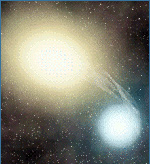AAVSO Maxima and Minima of Long Period Variables, 1900-2008
Elizabeth O. Waagen, Janet A. Mattei, and Matthew R. Templeton
Introduction
Long-term observations of long period variable stars are essential to the determination of period, change in period, change in behavior resulting from mass loss and/or evolution, mode of pulsation (fundamental or overtone), internal structure, and phase at specific times for these stars.


